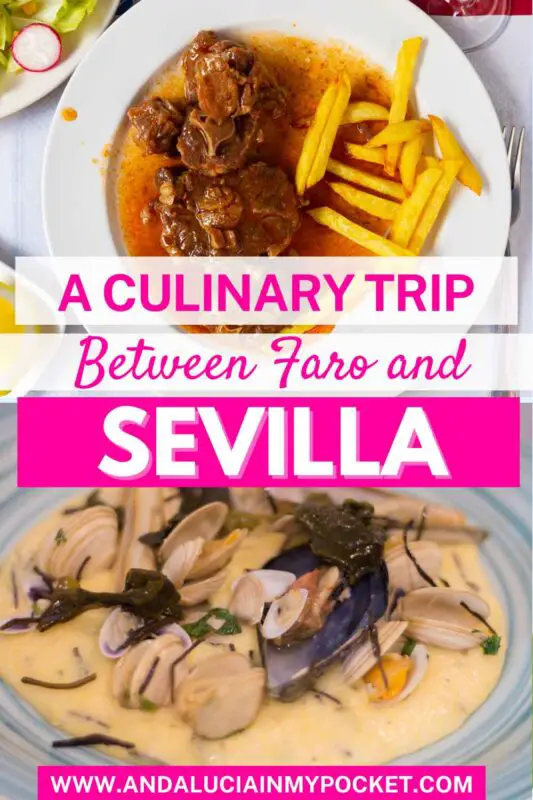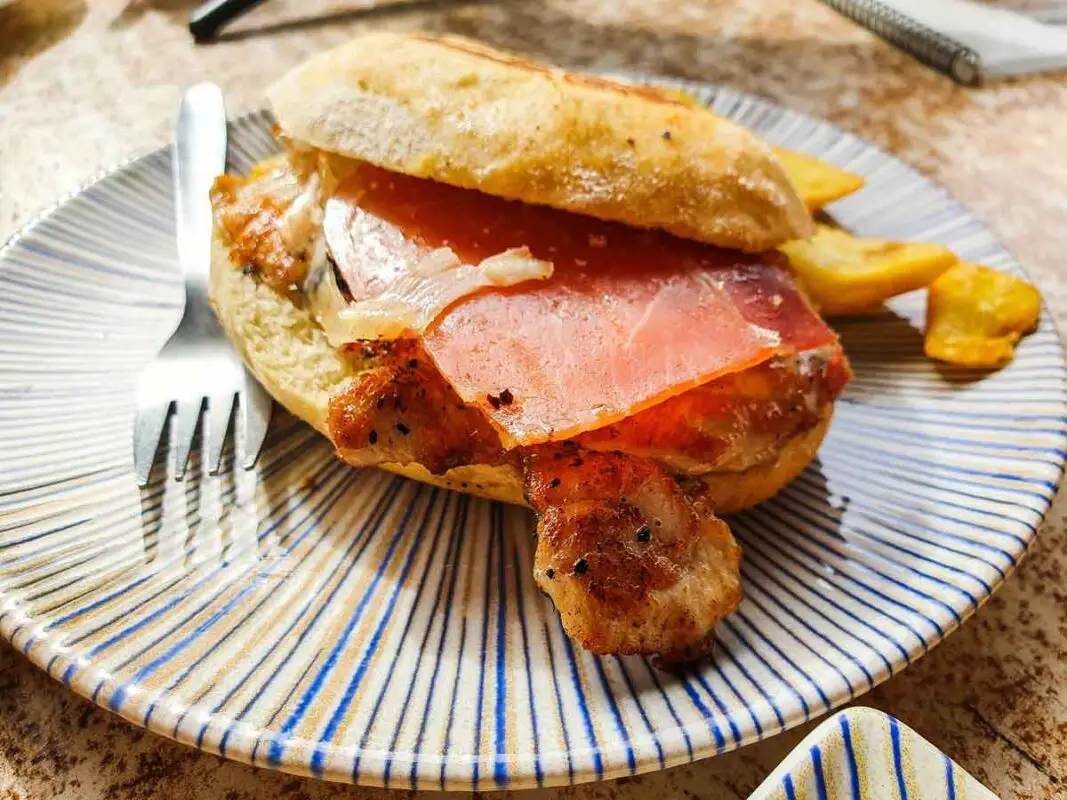Tapas, seafood, wine, beer, cheese, pastries—Spain and Portugal have a lot in common when it comes to great food. Travel just an hour or two in any direction on the Iberian Peninsula and you will encounter new dishes, new delicacies, and a whole new world of flavors.
To prove that point, we’re going to look at the culinary roadmap that exists between the cities of Seville in Spain and Faro in Portugal. So, if you’re a foodie and are taking the bus to Faro from Seville, be sure to stop along the way, to taste some of the typical dishes each city offers.
Seville

We’re starting our roughly 3-hour culinary journey in Seville, the capital of Andalucia, a city that produces many of the country’s most famous foods and dishes. Seville oranges grow throughout the region and orchards in bloom are a joyful sight during harvest time. Don’t be tempted to pick an orange from a tree on the side if the road, as these oranges are not for eating as they are quite bitter. However they produce fantastic marmalade and are used in the already famous Sevilla orange gin.
Andalucia is one of the areas in Spain where the Iberian pigs are grown. They produce the famous Jamon Serrano de Bellota, the most exquisite and high quality Iberian ham. If that’s not enough to whet your appetite, Seville is famous for the following dishes:
- Serranito: A crusty bread roll filled with grilled pork lion, Jamon Serrano, tomatoes, and grilled peppers.
- Carrillada: An indulgent beef cheek stew cooked in a Pedro Ximenez sweet wine sauce. The meat simply melts in your mouth.
- Espinacas con Garbanzos: One of Sevilla’s most famous tapas, consisting of spinach with chickepeas.
- Puchero: A type of stew made from chickpeas, root vegetables, and meat.
- Bacalao con tomate: A combination of two things that Seville always gets right: tomatoes and fresh fish.
For more traditional dishes to eat in Sevilla, click here.
Jerez de la Frontera

Make Jerez de la Frontera the next stop on the bus to Faro, as you enjoy more fresh seafood, including the almadraba tuna, which are caught fresh using an ancient fishing technique, in Barbate.
There are some excellent meat dishes too, with riñones al jerez being the star of the show. Often available as tapas, these lamb kidneys are flash-fried in olive oil and garlic – a delicious and moreish snack. If you like those, be sure to check out rabo de toro, a type of stewed bull’s tail cooked in sherry.
Speaking of sherry, this region is famous for it. This is the home of sherry, literally, as all sherry comes from a small area between Jerez de la Frontera, Puerto de Santa Maria, and Sanlucar de Barrameda.
Clearly, this is not a region that you should let roll by the bus window.
Huelva

Huelva is famous for its white shrimp and cuttlefish—another big seafood destination on the Spanish culinary map. If you didn’t get a chance to enjoy Iberian ham in Seville, stock up here, as Huelva has loads of the stuff! The ham is a little different here though.
In fact, all regions in Spain have their own unique approach, with variations in how the pigs are fed and how the meat is dried and stored. In Huelva’s case, pigs are fed natural foods, including local acorns, and they are let to roam freely.
We also recommend grabbing some pestiños, a fried treat often served with honey and sesame seeds. These delights are a remnant of the region’s Moorish influence.
Faro
The final stop of our journey takes us to Portugal and the beautiful vacation destination of Faro. It’s not as well-known for its food as Lisbon, but if you’re prepared to experiment, you can discover a wealth of unique flavors.
Xarem com conquilhas is one of the most interesting dishes, combining fresh seafood with cornmeal, spices, herbs, and lemon slices. It’s fresh, bright, and healthy—perfect whether as a summer pick-me-up or a comforting winter meal.
You will also find plenty of petiscos, the Portuguese version of tapas. You will find many of the same styles and flavors, but with a Portuguese twist and usually served with a local beer.
Feasting in Faro and Seville
Despite taking just a few hours, the bus journey from Seville to Faro passes through some amazing culinary destinations, so it’s worth planning your trip around them. And this is just a small slice of it. There are many more towns and cities out there and they’re all hiding their own delicacies and specialties. So, the next time you plan a gastronomic vacation, you know where to go!
Liked it? Pin it!

Disclaimer: Some of the links on this website are “affiliate links.” This means that if you click on the link and do a purchase, I will receive an affiliate commission at no extra cost to you. This helps me keep my website running and continue to share my travelling knowledge with you. I thank you for booking your flights or hotels using the links on my website. Regardless, I only recommend products or services I use personally and believe will add value to my readers.





